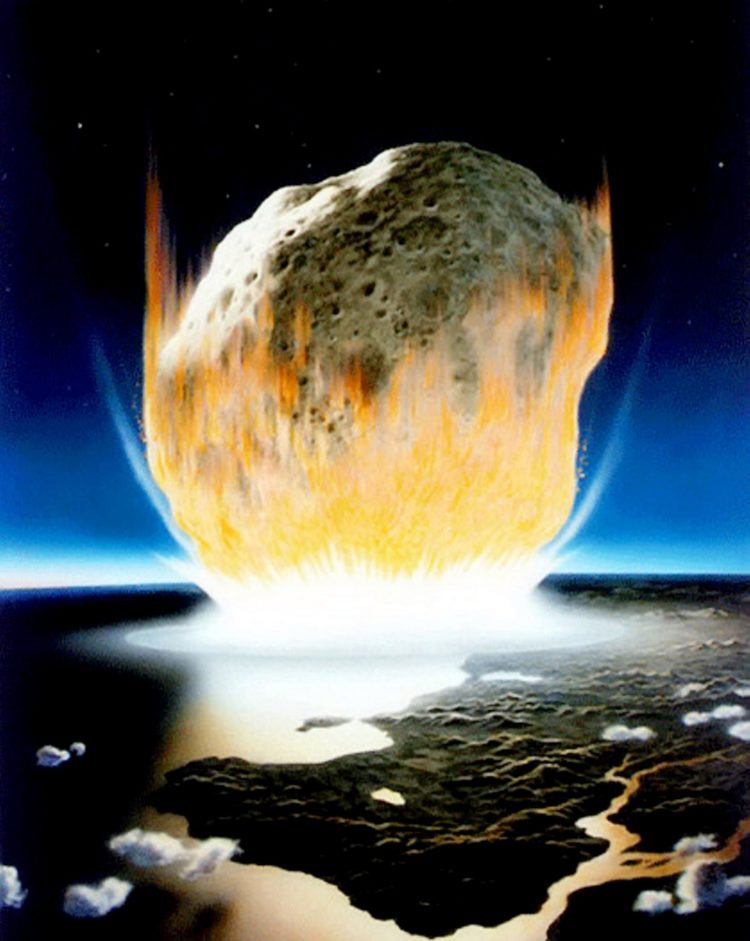
A new international study led by Yale University, in collaboration with the Universities of St Andrews and Bristol, confirms a long-held theory about the last great mass extinction event in history and how it affected Earth's oceans. The findings may also answer questions about the evolution of marine life on Earth.
The new study, published in the journal Proceedings of the National Academy of Sciences (PNAS) today (Monday 21 October), reveals the first direct evidence that the Cretaceous-Paleogene extinction event, which occurred 66 million years ago, coincided with a sharp drop in the pH levels of the oceans, indicating a rise in ocean acidity.
The Cretaceous-Paleogene die-off, also known as the K-Pg mass extinction event, occurred when a meteorite slammed into Earth at the end of the Cretaceous period. The impact and its after-effects killed almost 75% of the animal species on the planet, including whole groups such as the non-avian dinosaurs and ammonites.
"For a long time people have thought there might be a decrease in ocean pH because the meteorite hit sulphur-rich rocks, which could add sulphuric acid to the atmosphere and ocean, but until now no one had any direct evidence to show this happened," said co-author Dr James Rae, from the School of Earth and Environmental Sciences at the University of St Andrews.
To test this idea, the team made measurements of the composition of tiny fossil shells from before, during, and after the K-Pg event. Specifically, measurements of boron isotopes in these shells allowed the team of scientists to detect changes in the ocean's acidity.
Previous K-Pg research had shown that some marine calcifiers, animal species that develop shells and skeletons from calcium carbonate, were disproportionately wiped out in the mass extinction. The new study suggests that higher ocean acidity (lower pH) may have prevented these calcifiers from creating their shells. This was important, researchers note, because these calcifiers made up an important part of the first rung on the ocean food chain, supporting the rest of the ecosystem.
"Understanding the cause of this mass extinction, which was the end of so much iconic life on earth, has been a goal for decades", said co-author Professor Daniela Schmidt, of the University of Bristol.
"This unique dataset provides evidence for ocean acidification, affecting organisms which build shells and skeletons, with knock-on effects up the rest of the food chain."
Meanwhile, the team's boron isotope analysis and modelling techniques may have reconciled some competing theories and puzzling facts relating to ocean life after the K-Pg event.
Why, for example, are carbon isotope signatures, analysed from deep sea core samples, immediately after the K-Pg asteroid impact identical in fossil material from the sea floor and the surface waters, when normal carbon cycling in oceans should lead to different signatures?
One theory, the 'Strangelove Ocean' theory, argued that for a time after K-Pg, the ocean was essentially dead, and the normal carbon cycle just stopped. The problem with the 'Strangelove Ocean' theory, according to some researchers, is that many organisms on the sea floor that rely on food sinking from the ocean's surface continued unharmed across the K-Pg event, an unlikely occurrence in a dead ocean.
Another popular theory, called the 'Living Ocean', suggested that K-Pg killed off larger plankton species, disrupting the carbon cycle by making it harder for organic matter to sink to the deep sea, but allowed for some marine life to survive.
The new study splits the difference. It says the oceans had a major, initial loss of species productivity, by as much as 50%, followed by a transitional period in which marine life began to recover.
"In a way, we reconciled both of these 'Strangelove Ocean' and 'Living Ocean' scenarios," lead author Dr Michael Henehan, a former Yale scientist who is now at GFZ German Research Centre for Geosciences in Potsdam, Germany, said. "Both of them were partially right; they just happened in sequence."
"Our data show that ocean acidification was a likely cause of this massive extinction of marine life," added Dr Rae. "The ocean is acidifying again today, due to input of fossil-fuel CO2, so we have to worry about what will this will do to marine life in the future."
The paper Rapid ocean acidification and protracted Earth System recovery followed the end-Cretaceous Chicxulub impact is published in PNAS and is available online.
Please ensure that the paper's DOI (doi/10.1073/pnas.1905989116) is included in all online stories and social media posts and that PNAS is credited as the source.






